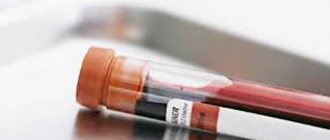Sometimes cancer patients require blood transfusions. If the doctor said that he plans to prescribe a blood transfusion, the patient usually has a lot of questions. Why is the procedure needed? Did something terrible happen? How safe is blood transfusion? Can you get HIV and other dangerous infections from a donor? How will the body react to someone else's blood? Will there be any complications? Is it possible to refuse blood transfusion or replace it with something else? [1,2]
Below you will find answers to many questions.
- What you need to know about blood?
- In what cases do cancer patients need blood transfusions?
- What are the types of blood transfusion?
- Red blood cell transfusion
- Plasma transfusion
- Platelet transfusion
- Cryoprecipitate transfusion
- Leukocyte transfusion
- How is the blood transfusion procedure performed?
- From whom can a blood transfusion be given?
- How is donor blood tested?
- Are there any alternatives?
- How safe is it?
- Is it possible to refuse a blood transfusion?
- Price
What you need to know about blood?
Doctors and scientists often refer to blood as the body's internal environment. It washes all organs. Blood performs many important functions: it carries oxygen, nutrients and hormones, removes waste products of metabolism, provides immune protection, and helps regulate body temperature.
Blood consists of two main parts:
- The liquid part is plasma. It is a solution of salts, ions, proteins and other substances.
- Blood cells. Erythrocytes (red blood cells) contain hemoglobin and transport oxygen. Leukocytes (white blood cells) provide nonspecific and immune protection. Platelets (blood platelets) form a clot when bleeding needs to be stopped. [1,3,4]
Book a consultation 24 hours a day
+7+7+78
Contraindications
There are a number of reasons why autohemotherapy is undesirable and even contraindicated:
- in the presence of a chronic disease;
- oncology of various organs;
- pregnancy and breastfeeding;
- uterine and adnexal inflammations;
- infertility;
- menopause in old age;
- with low hemoglobin levels;
- not recommended for neuropsychiatric disorders;
- presence of arrhythmia;
- people who have had heart attacks or strokes.
In what cases do cancer patients need blood transfusions?
Conditions requiring blood transfusion may be caused by the malignant tumor itself or by side effects of anticancer treatment.
Some types of cancer, especially tumors of the gastrointestinal tract and tumors of the female genital area (vagina, cervix, uterus), can cause internal bleeding.
With a long course of cancer, various disorders occur in the body, which cause the so-called anemia of a chronic disease.
Some malignant tumors affect the red bone marrow (the main organ of hematopoiesis), or organs that are necessary to maintain a normal number of blood cells (spleen, kidneys). These types of cancer may also require blood transfusions.
Transfusion of donor blood is needed for patients after complex operations that are accompanied by large blood loss.
Chemotherapy and radiation therapy affect not only tumor cells, but also other rapidly dividing cells in the body. Sometimes they cause quite a lot of damage to the red bone marrow. It disrupts the production of blood cells, which threatens anemia, bleeding, and severe infections against the background of decreased immunity. Blood transfusion helps normalize the patient's condition and prevent complications. [5-7]
If a blood transfusion is necessary for an oncology patient, the Euroonko clinic organizes this procedure as quickly as possible. We cooperate with the largest blood banks. The Euroonko clinic has a license for “transfusiology in outpatient and inpatient settings”; we employ experienced medical specialists.
Ivan Vyacheslavovich Petkiev Medical Director, Head of the Department of Resuscitation and Intensive Care
Evaluation of the effectiveness of the procedure
With the help of properly prescribed blood transfusion, it is possible to normalize the condition of a cancer patient and prevent severe complications of the disease. The result of a properly organized blood transfusion for oncology is visible almost immediately after its completion:
- hemoglobin levels increase;
- platelet count increases;
- the blood is saturated with oxygen;
- the feeling of weakness and chronic fatigue disappears;
- it becomes possible to carry out radiation therapy, chemotherapy, or perform surgery;
- Feeling better after blood transfusion for blood cancer.
The procedure increases the chances of a positive treatment outcome. The duration of the effect of blood transfusion depends on the nature of the oncological process and the individual characteristics of the patient. A positive result is more stable in the absence of constant internal bleeding.
Prescribing and performing blood transfusions in cancer patients requires high professionalism. The further condition of the patient depends on the procedure, especially during blood transfusion for stage 4 cancer, so it is necessary to undergo it in a safe place. Oncology provides a range of services related to oncology. Contact our center, here you can get advice, undergo an examination or additional examination, and receive the necessary treatment.
Red blood cell transfusion
The main function of erythrocytes (red blood cells) is the delivery of oxygen to tissues and the return transport of carbon dioxide to the lungs. A condition in which the number of red blood cells in the blood decreases is called anemia. Actually, this is an indication for red blood cell transfusion. The doctor makes a decision depending on how quickly the anemia increases:
- With chronic anemia, which increases gradually, there is no need to rush. The doctor monitors the patient’s condition, controls the level of red blood cells and hemoglobin. If these indicators decrease significantly, or the patient’s condition worsens, red blood cells are transfused. For heart and lung diseases that impede oxygen delivery to tissues, transfusions may be required even if there is a relatively small decrease in hemoglobin levels.
- Acute blood loss requires immediate action. This usually happens during surgery. If the doctor is planning a complex operation during which the patient will lose a lot of blood, blood transfusion may be performed in advance. [8]
Red blood cell mass
Examination before the procedure
To identify indications and contraindications for plasmapheresis and to exclude possible complications of the procedure, patients at the Yusupov Hospital undergo a comprehensive examination on the eve of the procedure:
- Examination by a therapist, which includes measuring blood pressure and assessing other important indicators of the body’s functioning;
- Clinical blood test to diagnose acute or chronic inflammatory process and other diseases;
- Determination of blood glucose levels (allows you to identify diabetes mellitus, and in persons with a confirmed diagnosis - to control blood glucose levels);
- Coagulogram (for the purpose of assessing the parameters of the blood coagulation system, identifying a tendency to increased bleeding or blood clots);
- Blood test for the Wasserman reaction (allows you to detect syphilis);
- Determination of antigens to HIV and hepatitis;
- A biochemical blood test with determination of the level of protein fractions allows us to identify a low protein content in the blood, which is a relative contraindication to plasmapheresis sessions.
In order to evaluate the work of the heart, an electrocardiogram is recorded using modern devices. At his discretion, the doctor may prescribe other examination methods that confirm the need for plasmapheresis or exclude this method of extracorporeal detoxification for a particular patient.
Plasma transfusion
Plasma, the liquid part of blood, appears as a clear, yellowish liquid. It contains blood clotting factors - substances that are necessary for the formation of a blood clot and stop bleeding. Plasma also contains substances that protect the body from infection.
Plasma can be stored frozen for up to 12 months. When necessary, it is thawed and the resulting fresh frozen plasma is transfused into the patient.
The main indication for plasma transfusion in cancer patients is increased bleeding. The procedure is also necessary for DIC syndrome (disseminated intravascular coagulation syndrome) - a serious condition in which blood clots form in small vessels, ultimately depleting the entire supply of platelets and coagulation factors, and there is a risk of severe bleeding. [9-10]
Blood plasma transfusion
Contraindications to plasmapheresis
Like any other procedure, plasmapheresis has some limitations: absolute and relative contraindications. The need for its use is determined by the attending physician after a comprehensive examination of the patient. Plasmapheresis is absolutely contraindicated in case of serious damage to vital organs (these include the brain, heart, lungs, kidneys and liver), as well as in case of massive bleeding. Due to the high risk of complications, including death, plasmapheresis is not performed if the patient has the following absolute contraindications:
- Cardiovascular diseases (especially the right parts of the heart muscle);
- Cerebrovascular accidents;
- Arterial hypertension (excessively high blood pressure);
- Anemia;
- High blood clotting;
- Blood too thick;
- Acute and chronic liver dysfunction;
- Drug addiction and neuropsychiatric disorders.
Blood purification is prescribed with caution in the following conditions:
- Tendency to bleed;
- Ulcerative lesions of the digestive tract;
- Arrhythmias, low blood pressure;
- Insufficient level of protein in the blood;
- Infectious processes in the acute stage;
- Menstruation (women).
Expert opinion
Alexey Vasiliev
Head of the Department of Neurology, Candidate of Medical Sciences, neurologist of the highest category
“High-volume plasmapheresis is considered the gold standard treatment for a wide range of neurological diseases. It is performed for patients with severe, aggressive multiple sclerosis, acute disseminated encephalomyelitis, myasthenia gravis, chronic inflammatory demyelinating polyneuropathy and many other diseases. This treatment method has a pronounced therapeutic effect, is safe and accessible to patients.
At the Department of Neurology of the Yusupov Hospital, plasmapheresis is performed with a volume of 2-2.5 liters per session. Such intensive use of plasmapheresis allows you to maximally cleanse the body of toxins and antibodies that destroy the myelin sheath of nerve fibers. After several sessions, patients note a decrease in the symptoms of the underlying disease and a general improvement in well-being.”
Platelet transfusion
Platelets, or blood platelets, take part in the formation of a blood clot and stop bleeding. Their levels may drop due to chemotherapy, radiation therapy, or if the tumor has replaced normal red bone marrow tissue. Platelet transfusions are usually required for cancer patients in one of three cases:
- if the level of platelets in the blood has fallen below a critical value;
- if there is increased bleeding, risk of bleeding;
- if you are undergoing surgery during which significant blood loss is expected. [11,12]
Platelet mass
What does transfusion help with?
Solid tumors lead to significant changes in the hematopoietic system. Under their influence, anemia and abnormalities in the blood clotting system can develop.
The disintegration of tumors leads to depletion of the bloodstream and blood reserve of the body. Surgical treatment also leads to massive bleeding. All of the above factors lead to the fact that the body’s own reserve is depleted and it requires a blood transfusion from a donor. Due to insufficient blood volume, treatment may be delayed because In case of anemia and thrombocytopenia, chemotherapy cannot be administered.
Chemotherapy drugs can have side effects on blood germs and worsen thrombocytopenia. That is why constant monitoring of red and white blood indicators and coagulation properties is necessary. If any deviations from the norm are noted, blood transfusion is prescribed according to all rules.
How is the blood transfusion procedure performed?
Although blood transfusion is formally equated to surgical interventions, this procedure is not at all scary and is practically painless. Blood transfusion is carried out through a needle that is inserted into a vein. It is no more painful than a regular intravenous injection. If the patient already has a central venous catheter, donor blood can be administered through it.
The blood transfusion procedure can take different times, depending on which blood components are transfused: from 30–60 minutes (platelet transfusion) to 2–4 hours (red blood cell transfusion).
How is plasmapheresis performed?
The plasmapheresis technique involves centrifuging blood inside a plasma filter, where it is separated into plasma and red blood cells. The process of plasmapheresis occurs as follows:
- First, the patient is placed in a chair. A sterile catheter connected to a plasma filter tube is inserted into one of his peripheral veins;
- The device starts running a program that determines the required volume of liquid to be withdrawn. Blood is automatically drawn from a vein into a machine where the blood is divided into fractions;
- at the end of the procedure (the time of plasmapheresis depends on the therapeutic purpose pursued), the blood, the plasma of which was replaced with a plasma substitute substance or donor plasma, is returned back.
Plasmapheresis is considered the safest method of blood purification among other similar methods. Moreover, its obvious advantage is painlessness, since the blood purification procedure itself is carried out extracorporeally. Plasmapheresis is always monitored by a doctor or nurse who is able to provide timely assistance to the patient if necessary.
How is donor blood tested?
A person who donates blood for the first time must fill out a questionnaire, undergo an examination by a therapist, a dermatovenerologist, and take tests for blood type, Rh factor, and infections: HIV, viral hepatitis B and C, syphilis, cytomegalovirus. Sometimes the examination program can be expanded.
If signs of a particular infection are found in the donor’s blood, it is discarded and not used in the future.
The compatibility of the blood of the donor and the recipient is checked using a special test - a cross-blood compatibility test.
Positive effects
Plasmapheresis allows you to cleanse the blood of harmful substances:
- Metabolic products - uric acid, urea, creatinine;
- Inflammatory mediators;
- Hormones;
- Antigens;
- Antibodies;
- High molecular weight lipids;
- Toxins.
The procedure allows you to achieve significant physiological changes. By creating artificial hypovolemia, the body's protective properties are activated. Swelling decreases, the concentration of harmful substances in the blood decreases.
Are there any alternatives?
Sometimes blood disorders can be corrected with medications without blood transfusion. For example, colony-stimulating factors are used to increase the number of white blood cells.
However, in cases where blood transfusion is necessary, there are no alternatives. There are no blood substitutes that can provide similar effects. That is why donation is constantly promoted in all countries of the world, including Russia, and donor days are held periodically. It is important. This helps save the lives of many people. [15]
Will autohemotherapy help get rid of acne?
Autohemotherapy is the transfusion of the patient's own venous blood. It is taken from a vein and injected into the gluteal muscle.
Doctors claim that 80 percent of patients are cured and admire their reflection in the mirror. Patient reviews are positive in 90 percent of cases.
After the procedures, cleansing of the lymphatic and circulatory system begins. Accordingly, the skin condition improves. Increases immunity and metabolism. Treatment takes ten days. Depends on the severity of the disease. Doctors such as a therapist, dermatologist, dermatovenerologist, and surgeon can prescribe such treatment. If you have been treated by a cosmetologist, then he may advise you to contact your doctors for a referral or do the procedure yourself if you have experience in this area.
If acne and boils are in a very advanced state, a blood transfusion with antibiotics and anti-inflammatory drugs is prescribed. After completing the course, rapid healing of wounds and abrasions, cleansing of the skin and increased performance are observed.
How safe is it?
Is it possible to get an infection from donated blood during a blood transfusion? Donated blood goes through rigorous testing, but there are still risks, even though they are negligible. Thus, the likelihood of becoming infected with HIV through donated blood is lower than the likelihood of being struck by lightning during a person’s lifetime. The risk of contracting hepatitis C is 1 in 2,000,000. Doctors and scientists are constantly working to reduce the risks to zero. [16]
Can incompatible blood be transfused? Before blood transfusion, the recipient's blood type and Rh factor must be determined; the doctor must make sure that the blood of the donor and recipient are compatible.
But the blood of different people can differ not only in group A0 and Rh factor. It is very difficult to take into account all the nuances. Therefore, there is a slight risk of an allergic reaction during blood transfusion. Most often it manifests itself in the form of fever, chills, and rash. Such complications are rarely life-threatening. In order to provide assistance to the patient, if necessary, a medical professional is constantly monitoring his condition during the procedure.
An allergic reaction can occur not only directly during a transfusion, but also within 48 hours after the blood transfusion. You should immediately tell your doctor if your body temperature rises above 38°C, chills, rash, itching, redness of the skin, shortness of breath, difficulty breathing, nausea, lower back pain, blood in the urine, weakness. The most dangerous symptom after blood transfusion is chest pain, which requires immediate attention. If you are at home, you should immediately call an ambulance. [5]
Algorithm for blood transfusion
ABO system The main antigens of the ABO system are 2-A and B. As separate specificities, 2 more antigens are distinguished in it - A, B and A1. The absence of these 4 antigens on red blood cells is designated O. Anti-A and anti-B antibodies are of natural origin. They are designated by the Greek α and β. There are 4 blood groups formed by combinations of antigens A and B with isohemagglutinins α and β. On red blood cells of the first group O (I), antigens A and B are absent, the plasma contains antibodies α and β. In the second blood group A (II), the erythrocytes have antigen A, and the plasma contains β antibodies. The third group B (III) contains the B antigen and α antibodies. In the fourth group AB (IV), antigens A and B are present; isohhemamaglutinins α and β are absent in the blood serum.
Rh factor
Rh factor is an antigen found in the red blood cells of 85% of people, as well as in Macaus rhesus monkeys. The blood of people whose red blood cells contain Rh is called positive. There are several different antigens of the Rh system, including the Hr group, which forms a common system with Rh. Rh-Hr Including -3 varieties of Rh agglutinogen (C, D, E) -3 varieties of Hr agglutinogen (c, d, f) and other rarer species. Agglutinogen Hr is found in the red blood cells of 83% of people. The Rh factor is inherited as a dominant trait and does not change throughout life. The transfusion of blood components has the right to be carried out by: - The attending physician or the doctor on duty. -During the operation, the surgeon or anesthesiologist (not involved in the operation or anesthesia). -Doctor of the blood transfusion department or room. -Transfusiologist.
Determination of blood group according to the ABO system (Using coliclones) - 2 drops (0.1 ml) of the reagent and next to one drop of red blood cell sediment (0.02 - 0.03 ml) - Serum and red blood cells are mixed with a glass rod - The plate is periodically shaken, observing the progress of the reaction for 5 minutes (allows you to identify the weak agglutinogen A2) - interpret the results
Difficult to determine blood types
Blood subgroups. Antigen A, contained in erythrocytes of groups A (II) and AB (IV), can be represented by two variants (subgroups) - A_1 and A_2. Antigen B has no such differences. Nonspecific agglutination of erythrocytes. It is judged on the basis of the ability of erythrocytes to agglutinate with sera of all groups, including AB (IV). Nonspecific agglutination is observed in autoimmune hemolytic anemia and other autoimmune diseases accompanied by the adsorption of autoantibodies on erythrocytes, in hemolytic disease of newborns, whose erythrocytes are loaded with maternal alloantibodies.
Blood chimeras. Blood chimeras are the simultaneous presence in the bloodstream of two populations of red blood cells that differ in blood type and other antigens. Transfusion chimeras arise as a result of repeated transfusion of red blood cells or suspension of group 0 (I) to recipients of another group. True chimeras occur in heterozygous twins, as well as after allogeneic bone marrow transplantation. Other features. Determining the AB0 blood group and Rhesus affiliation can be difficult in patients due to changes in the properties of red blood cells in various pathological conditions (in patients with liver cirrhosis, burns, sepsis). Determination of Rh-belonging
Apply a large drop (about 0.1 ml) of reagent to the plate. A small drop (0.02-0.03 ml) of the red blood cells being tested is placed nearby. Mix the reagent with red blood cells thoroughly using a glass rod. Rock the record gently. The reaction results are taken into account 3 minutes after mixing. If agglutination is present, the blood being tested is labeled as Rh positive; if not, it is marked as Rh negative.
Compatibility test on a plane at room temperature
To conduct tests for individual compatibility, the patient’s blood (serum) is used, taken before transfusion or no more than 24 hours before, provided it is stored at a temperature of +4+2°C.
Apply 2-3 drops of the recipient's serum to the plate and add a small amount of red blood cells so that the ratio of red blood cells to serum is 1:10. Next, the red blood cells are mixed with the serum, and the plate is gently rocked for 5 minutes. Compatibility test using 33% polyglucin
Add 2 drops (0.1 ml) of recipient serum, 1 drop (0.05) ml of donor erythrocytes into the test tube and add 1 drop (0.1 ml) of 33% polyglucin.
The test tube is tilted to a horizontal position, shaking slightly, then slowly rotated so that its contents spread over the walls in a thin layer. Contact of erythrocytes with the patient’s serum while rotating the tube should continue for at least 3 minutes.
After 3-5 minutes, add 2-3 ml of physiological solution to the test tube and mix the contents by inverting the test tube 2-3 times without shaking.
The result is taken into account by viewing the test tubes with the naked eye or through a magnifying glass. Agglutination of red blood cells indicates that the blood of the recipient and the donor are incompatible; the absence of agglutination is an indicator of the compatibility of the blood of the donor and recipient.
Technical errors
Incorrect order of reagents. Temperature conditions (blood group determination is carried out at a temperature not lower than 15°C and not higher than 25°C) The ratio of reagents and red blood cells being studied. Duration of observation. (allows us to identify weak agglutinogen A_2, characterized by delayed agglutination)
Biological sample
The biological test is carried out regardless of the volume of the blood transfusion medium and the speed of its administration.
If it is necessary to transfuse several doses of blood components, a biological test is carried out before the start of the transfusion of each new dose. Technique for conducting a biological test: 10 ml of blood transfusion medium is transfused once at a rate of 2 - 3 ml (40 - 60 drops) per minute
observe the recipient for 3 minutes, monitoring his pulse, breathing, blood pressure, general condition, skin color, and measure body temperature
This procedure is repeated twice more. The appearance during this period of even one of the clinical symptoms such as chills, lower back pain, a feeling of heat and tightness in the chest, headache, nausea or vomiting requires immediate cessation of the transfusion and refusal to transfuse this transfusion medium.
The urgency of transfusion of blood components does not exempt one from performing a biological test!!!
The doctor performing the transfusion of blood components is obliged to:
1. Determine the indications for blood transfusion therapy, taking into account contraindications.
2. Obtain informed voluntary consent of the recipient or his legal representative to conduct blood transfusion therapy in the prescribed form.
3. Conduct an initial determination of the patient’s blood group according to the ABO system.
IT IS STRICTLY PROHIBITED TO USE DATA ABOUT GROUP MEMBERSHIP FOR THE ABO AND RHESUS SYSTEMS FROM THE PASSPORT, PREVIOUS ILLNESS HISTORY AND OTHER DOCUMENTS.
4. Include in the referral to the clinical diagnostic laboratory (form No. 207/u) information about the result of determining the blood group according to the ABO system, a series of diagnostic tests, transfusion and obstetric-gynecological history. Sign the direction
5. Familiarize yourself with the conclusion of the clinical diagnostic laboratory. Transfer data about the group and Rh affiliation of the patient to the front part of the inpatient medical card, indicating the date of the analysis and your last name.
6. Prepare a pre-transfusion epicrisis.
7. Conduct a macroscopic assessment of laboratory gelatin and diagnosticums.
8. Conduct a macroscopic assessment of each dose of blood transfusion medium.
9. Immediately before transfusion, determine the recipient’s blood group according to the ABO system.
10. Determine the blood group according to the ABO system with erythrocyte-containing medium.
11. Check the compliance of passport data.
12. Conduct a compatibility test between the recipient’s blood and the donor’s blood (transfusion medium) according to the ABO and Rh systems.
13. Record the results of isoserological studies in the protocol of the blood transfusion operation.
TESTS FOR INDIVIDUAL COMPATIBILITY ACCORDING TO THE ABO AND RHESUS SYSTEM DO NOT REPLACE EACH OTHER.
ARE CARRIED OUT IN ALL CASES WITH BLOOD SAMPLES FROM EACH CONTAINER.
MANDATORY EVEN IF THE ERYTHROCYTE MASS OR SUSPENSION IS SELECTED FOR THE RECIPIENT INDIVIDUALLY IN A SPECIALIZED LABORATORY.
14. Conduct a biological test. Record its result in the protocol of the blood transfusion operation.
15. Monitor the condition of the recipient, the rate of administration of the transfusion medium.
16. If the patient’s condition changes, first of all, exclude a post-transfusion complication.
17. Assess blood pressure, pulse, thermometry results.
18. Register blood transfusion:
•in the observation diary of the medical record of an inpatient;
• in the register of registration of blood transfusions and its components (form No. 009/u);
•fill out the blood transfusion protocol
19. Conduct a macro-assessment of the first portion of urine.
20. Prescribe clinical blood and urine tests the next day after blood transfusion.
21. Assess daily diuresis, water balance, results of urine and blood tests.
22. Observe the patient and reflect the observation results in the medical history diary. If clinical symptoms and laboratory parameters change before the patient is discharged from the hospital, first of all exclude a post-transfusion complication.
Complications - Immune complications (acute hemolysis, hyperthermic non-hemolytic reaction, anaphylactic shock, non-cardiogenic pulmonary edema)
-Non-immune complications (acute hemolysis, bacterial shock, OSHF, pulmonary edema)
- Immediate complications (alloimmunization with antigens of erythrocytes, leukocytes, platelets or plasma proteins, hemolysis, graft-versus-host disease, post-transfusion purpura)
Long-term complications
-Immune (hemolysis, Graft-versus-host disease, Post-transfusion purpura, Alloimmunization with antigens of erythrocytes, leukocytes, platelets or plasma proteins
Literature:
A. G. Rumyantsev, V. A. Agranenko. Clinical transfusiology-M.: GEOTAR MEDICINE, 1997.
E. B. Zhiburt. Transfusiology-S.: PETER, 2002.
Regulations and audit of blood transfusion. Guide for doctors. -M. , RANS, 2010.
Ragimov A. A. Transfusiology . National leadership-M.: GEOTAR Media, 2012.
S. I. Donskov, V. A. Morokov. Human blood groups: Guide to immunoserology - M.: IP Skorokhodov V. A., 2013.
Zhiburt E. B. Patient blood management//Healthcare. -2014.
Algorithms for studying erythrocyte antigens and anti-erythrocyte antibodies in difficult to diagnose cases. Methodological recommendations N 99/181 (approved by the Ministry of Health of Russia on May 17, 2000)
Order of the Ministry of Health of Russia dated November 25, 2002 N363 “On approval of the Instructions for the use of blood components”
Order of the Ministry of Health of Russia dated 04/02/2013 N183н “On approval of the rules for the clinical use of donor blood and (or) its components”
Is it possible to refuse a blood transfusion?
The patient always has the right to refuse prescribed treatment, be it chemotherapy, surgery or blood transfusion. But you need to remember some points:
- A doctor will not prescribe a procedure, especially one as serious as a blood transfusion, just like that. If the doctor decides to perform a blood transfusion, then there are good reasons for this, and first of all it is in the interests of the patient.
- Large blood loss during surgery and significant blood disorders can lead to death or serious complications and impair the effectiveness of antitumor treatment.
- There are some risks during blood transfusion, but they are negligible, and the procedure often helps save the patient's life.
Euroonko clinics officially cooperate with the largest blood banks in the country. We operate on the basis of a license for “transfusiology in outpatient and inpatient settings” issued by the health departments of Moscow and St. Petersburg.
When was transfusion in vogue?
The ban on transfusions appeared even before the formation of WADA - the IOC equated transfusions with doping after the 1984 Games. In the 1970s, athletes often resorted to this method, which even then received the secret name “blood doping.”
In the late 1980s, erythropoietin established itself in sports for a long time, which gave the same effect as a transfusion. In 2001, WADA introduced a direct test for EPO, which led to a renewed fashion for blood fraud.
American cyclist Tyler Hamilton was deprived of gold at the 2004 Games precisely because of a transfusion, and Alexander Vinokurov was caught doing the same thing at the 2007 Tour de France. The main hero (and later the main doper) of cycling, Lance Armstrong, also could not do without this prohibited method.
If you think that the experience of cycling has taught other sports something, then you are mistaken: the latest scandal with transfusion occurred at the 2019 World Ski Championships in Seefeld.
The police have busted a doping scheme involving skiers from Austria, Estonia and Kazakhstan. The athletes were promptly disqualified, and it seems that skiing no longer remembers the scandal. But the confused face of the Austrian Max Hauke, who was caught giving a transfusion, is very difficult to forget.
This is what it looks like.
Price
- Consultation with a transfusiologist - 5,100 rubles.
- Complete blood count (CITO) - RUB 2,400.
- Compatibility test before blood transfusion - 3,200 .
- Erythrocyte suspension, depleted of leukocytes (filtered) - 24,000 rub.
- Transfusion of blood components - 5,300 rubles.
- The cost of fresh frozen plasma (1 dose 250 ml) is 25,300 rubles.
- Platelet concentrate (1 dose) - 86,100 rub.
In accordance with the legislation of the Russian Federation (Law of the Russian Federation of June 9, 1993 N 5142-I “On the donation of blood and its components”), the procurement of blood, the receipt of blood components and their storage are carried out exclusively by state budgetary institutions. Blood transfusions to our patients are carried out on the basis of licenses for “transfusiology in outpatient and inpatient settings”.
Book a consultation 24 hours a day
+7+7+78
Bibliography:
- G.I. Kozin. Practical transfusiology. Practical medicine, Moscow 2005.
- Igonina M. E. Donate blood to save a life // BMIK. 2013. No. 2.
- O. A. Rukovitsyn. Hematology. National leadership. GEOTAR-Media.
- S. M. Lewis, B. Bain, I. Bates. Practical and laboratory hematology. Moscow, GEOTAR-Media, 2009.
- Seth Lotterman; Sandeep Sharma. Blood Transfusion. Treasure Island (FL): StatPearls Publishing; 2022 Jan-.
- Sandhya Yaddanapudi and LN Yaddanapudi. Indications for blood and blood product transfusion. Indian J Anaesth. 2014 Sep-Oct; 58(5): 538–542. doi: 10.4103/0019-5049.144648.
- Lawrence Tim Goodnough, MD and Anil K. Panigrahi, MD, PhDa. Blood Transfusion Therapy. Med Clin North Am. Mar 2022; 101(2): 431–447. Published online 2016 Dec 24. doi: 10.1016/j.mcna.2016.09.012.
- Giancarlo Liumbruno, Francesco Bennardello, Angela Lattanzio, Pierluigi Piccoli, and Gina Rossetti. Recommendations for the transfusion of red blood cells. Blood Transfus. 2009 Jan; 7(1): 49–64. doi: 10.2450/2008.0020-08.
- Ryan A. Lawless, MD and John B. Holcomb, MD Plasma Transfusion. Trauma Induced Coagulopathy. 2015 Dec 11: 323–337. Published online 2015 Dec 11. doi: 10.1007/978-3-319-28308-1_20.
- Giancarlo Liumbruno, Francesco Bennardello, Angela Lattanzio, Pierluigi Piccoli, Gina Rossetti, and as Italian Society of Transfusion Medicine and Immunohaematology (SIMTI) Working Party. Recommendations for the transfusion of plasma and platelets. Blood Transfus. 2009 Apr; 7(2): 132–150. doi: 10.2450/2009.0005-09.
- Atif I. Khan; FaizAnwer. Platelet Transfusion. Treasure Island (FL): StatPearls Publishing; 2022 Jan-.
- Neil Blumberg, Joanna M Heal and Gordon L Phillips. Platelet transfusions: trigger, dose, benefits, and risks. F1000 Med Rep. 2010; 2: 5. Published online 2010 Jan 27. doi: 10.3410/M2-5.
- B. Nascimento, L. T. Goodnough, and J. H. Levy. Cryoprecipitate therapy. Br J Anaesth. 2014 Dec; 113(6): 922–934. Published online 2014 Jun 27. doi: 10.1093/bja/aeu158.
- Juan Gea-Banacloche, MD. Granulocyte Transfusions: A Concise Review for Practitioners. Cytotherapy. 2022 Nov; 19(11): 1256–1269. Published online 2022 Sep 12. doi: 10.1016/j.jcyt.2017.08.012.
- A. A. Kerimov Blood transfusion: is there an alternative? // Biomedicine (Baku). 2004. No. 3.
- Polunina N.V., Gubanova M.N., Zhiburt Evgeniy Borisovich Risk of infection transmission during blood transfusion // Russian Medical Journal. 2016. No. 6.
Side effects
Complications of this procedure cannot be excluded. This:
- body pain;
- temperature;
- swelling at the injection sites, formation of compactions;
- inflammatory processes.
To avoid compaction, apply to the injection site: a heating pad, an alcohol compress, make an iodine mesh or massage.
There is a specific blood transfusion scheme:
- intravenous;
- subcutaneous;
- intramuscular.










